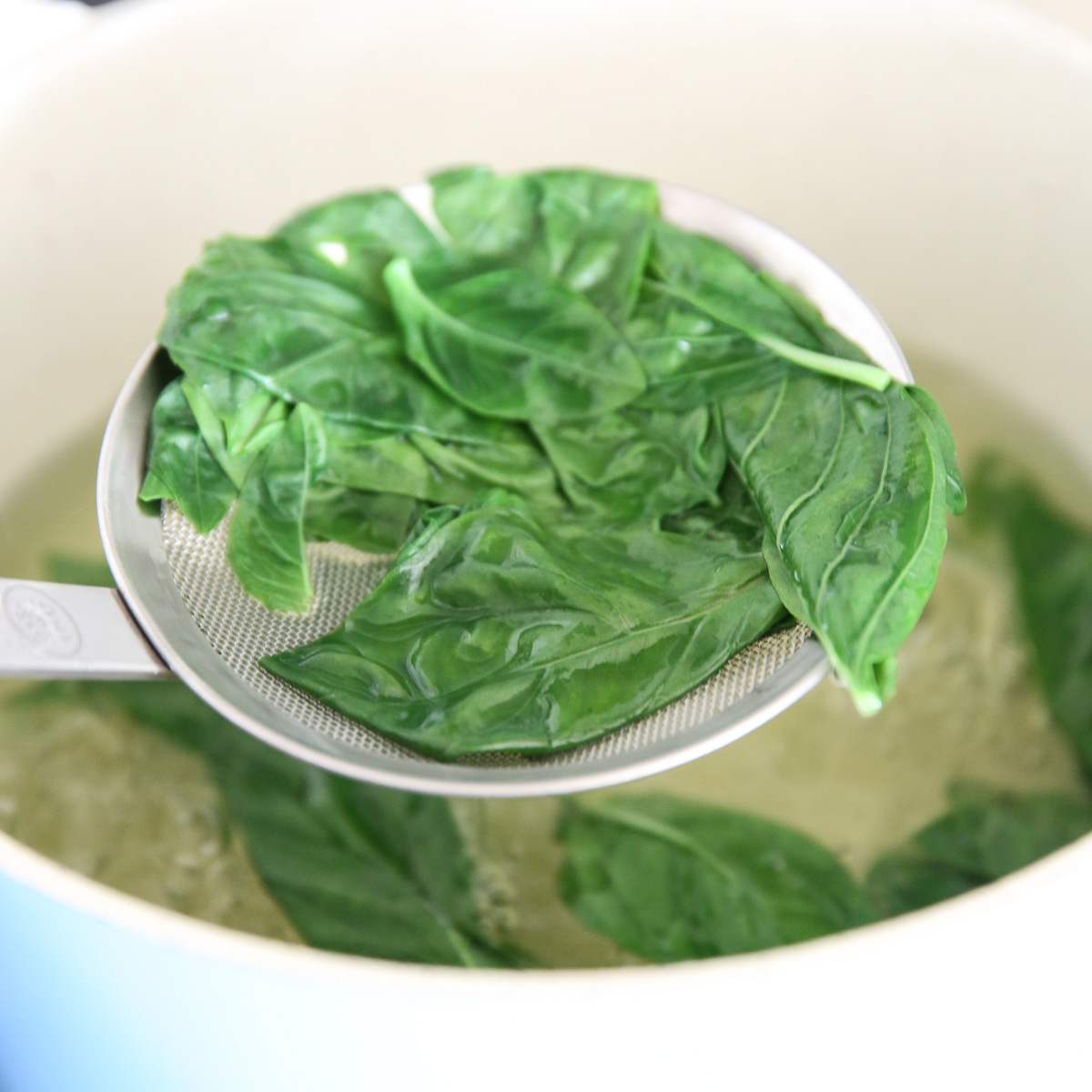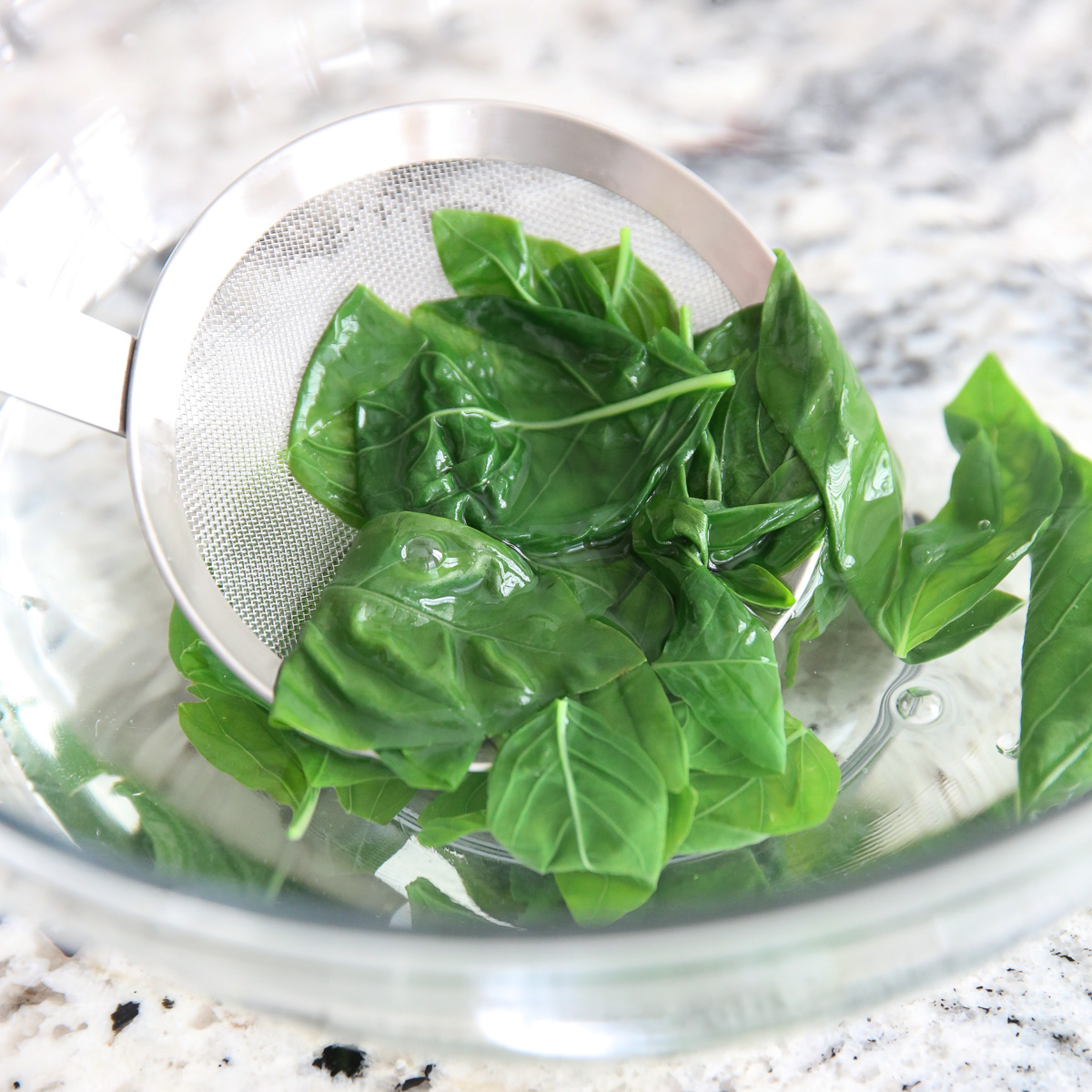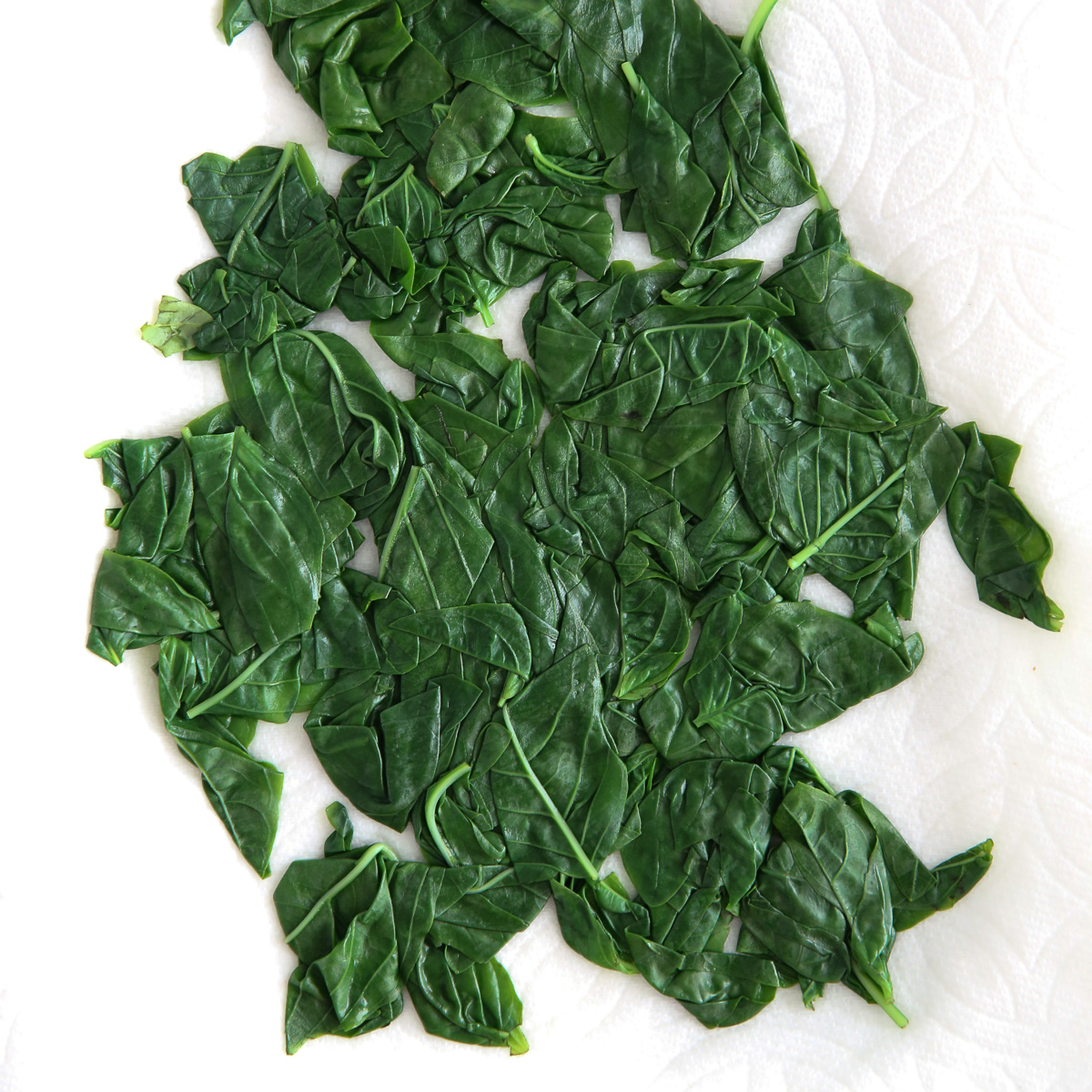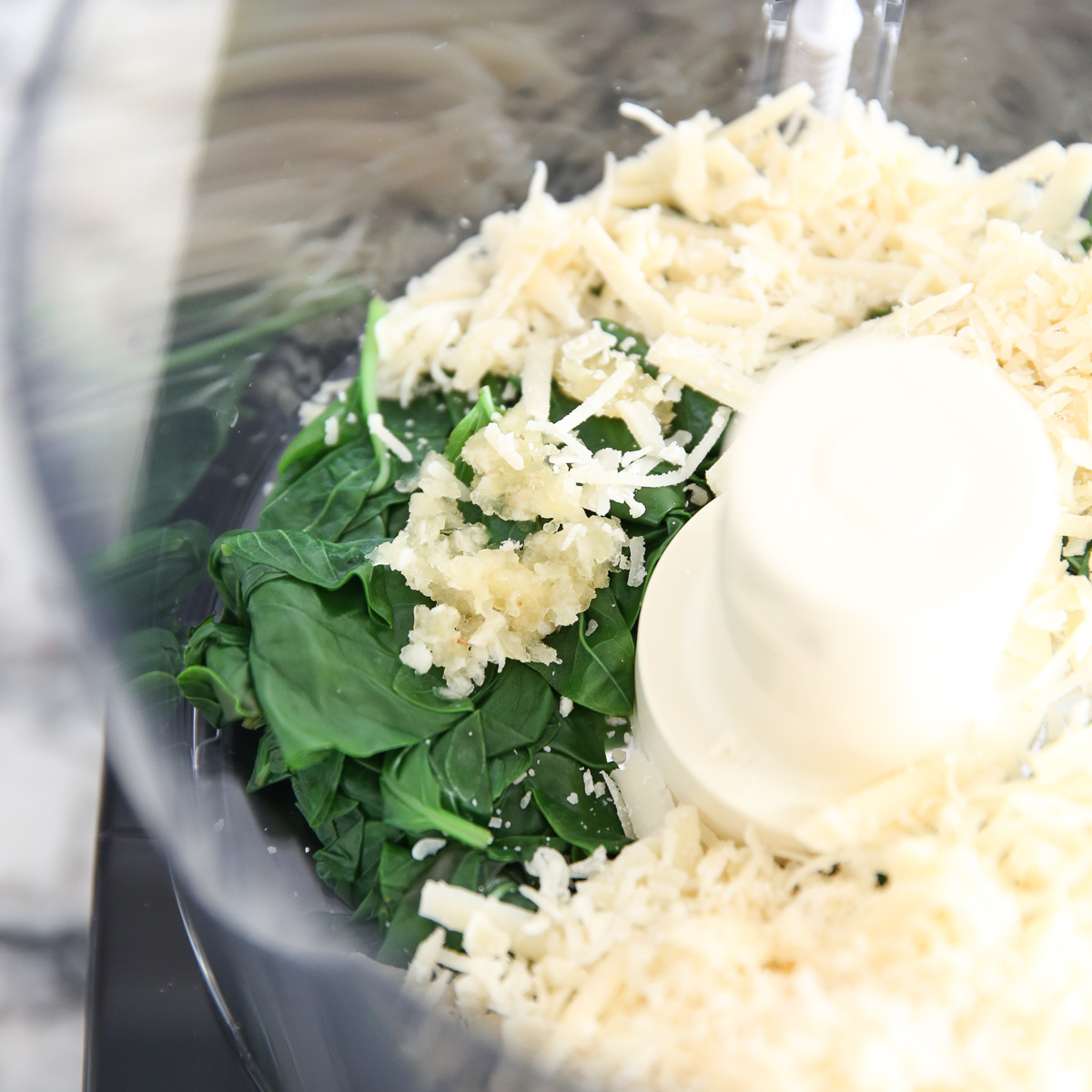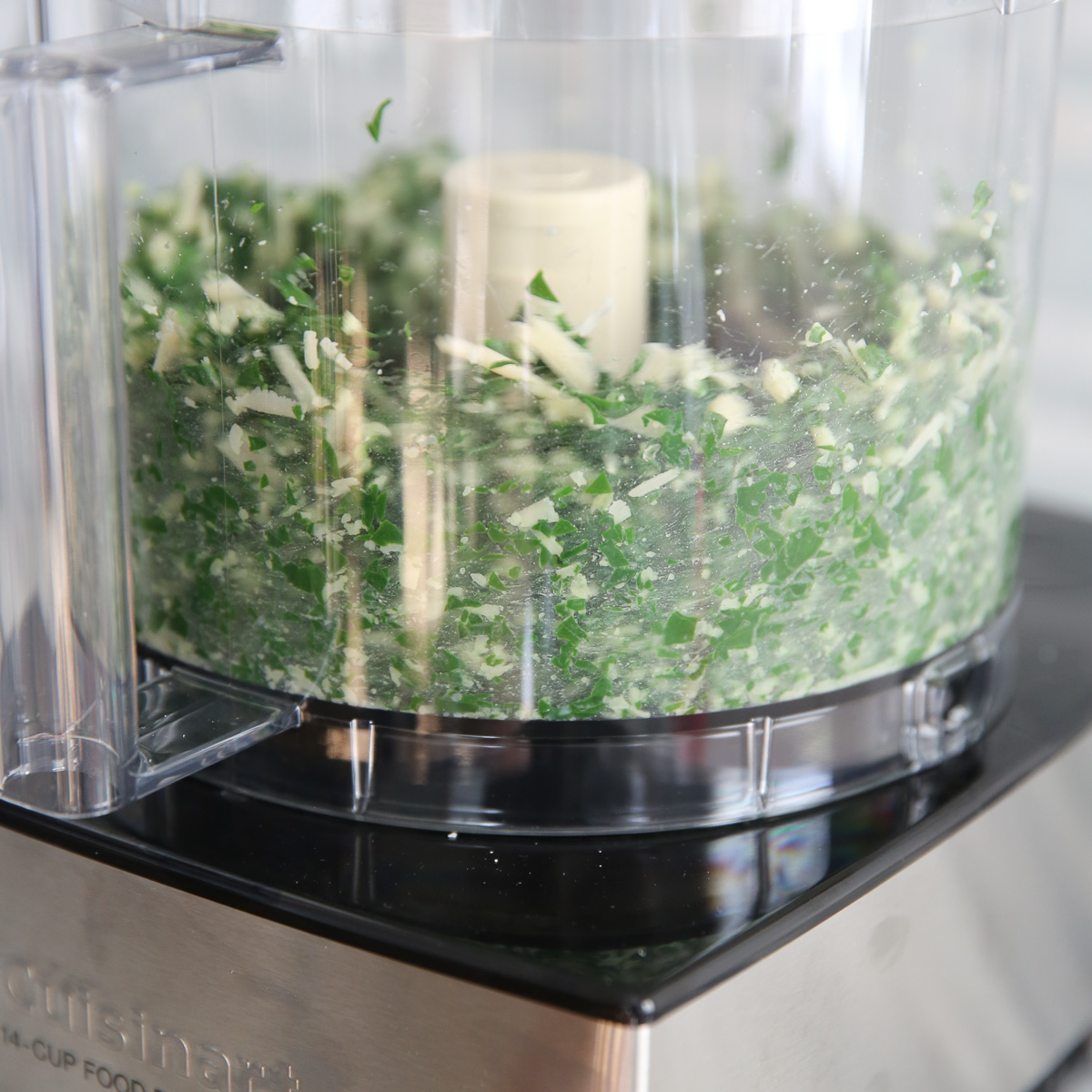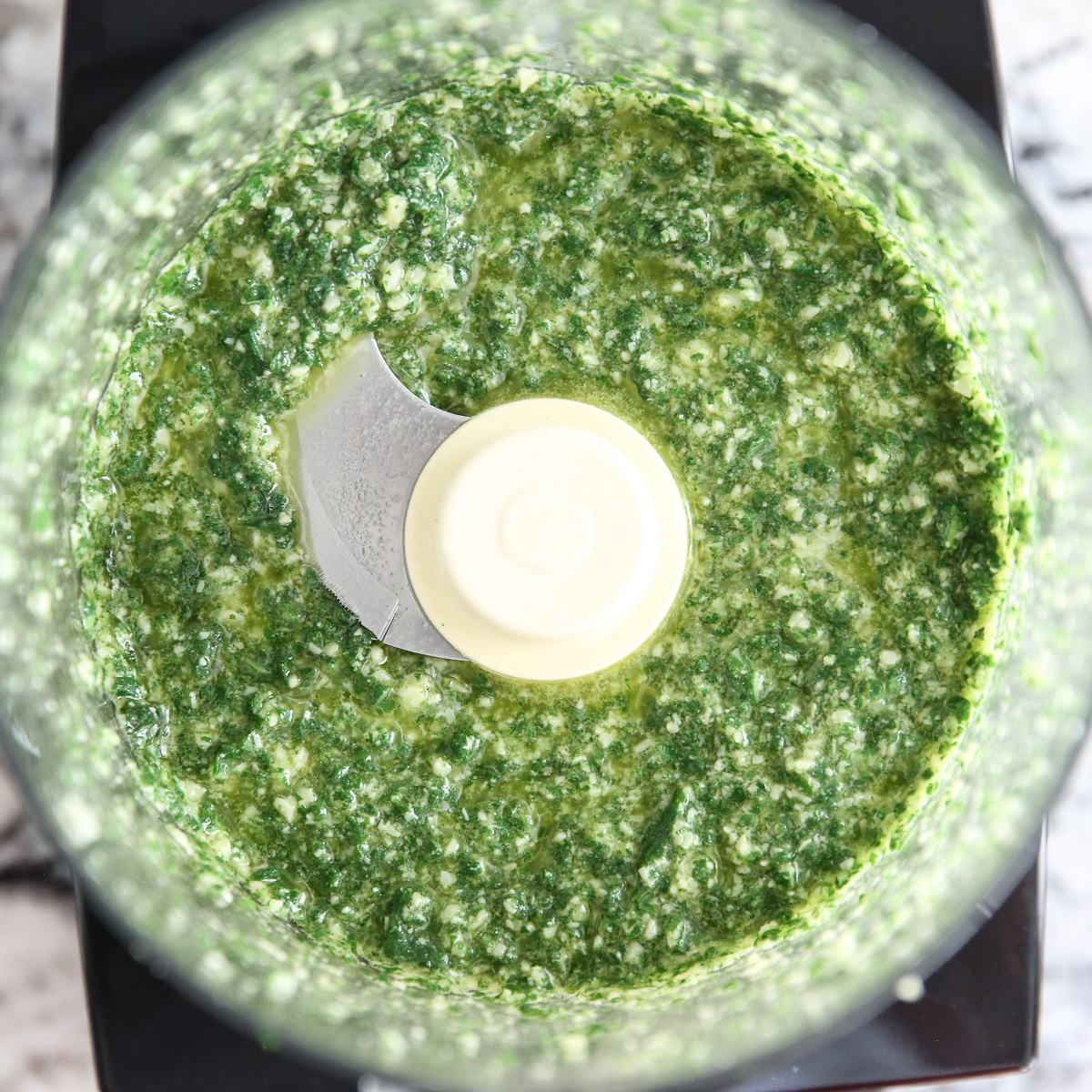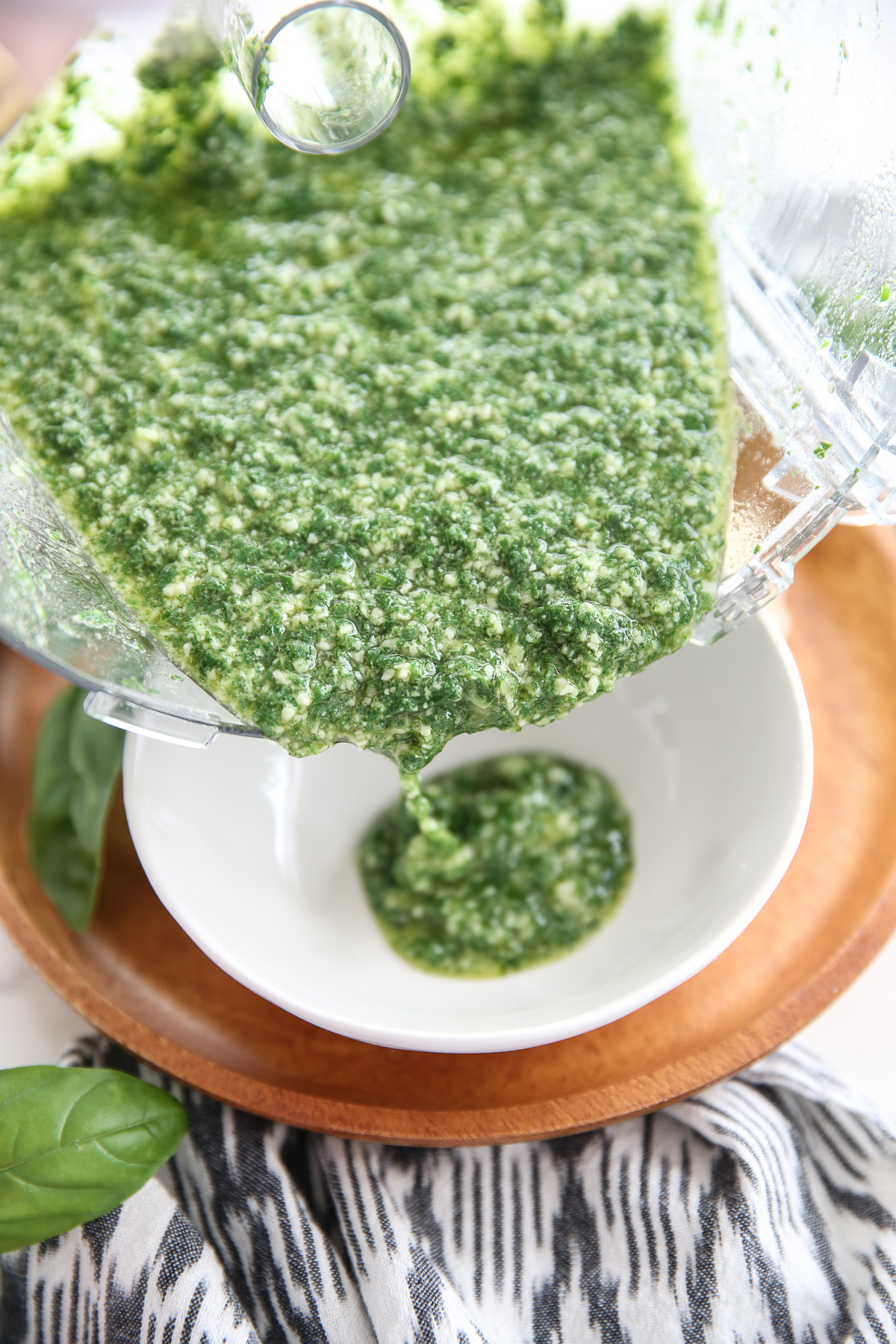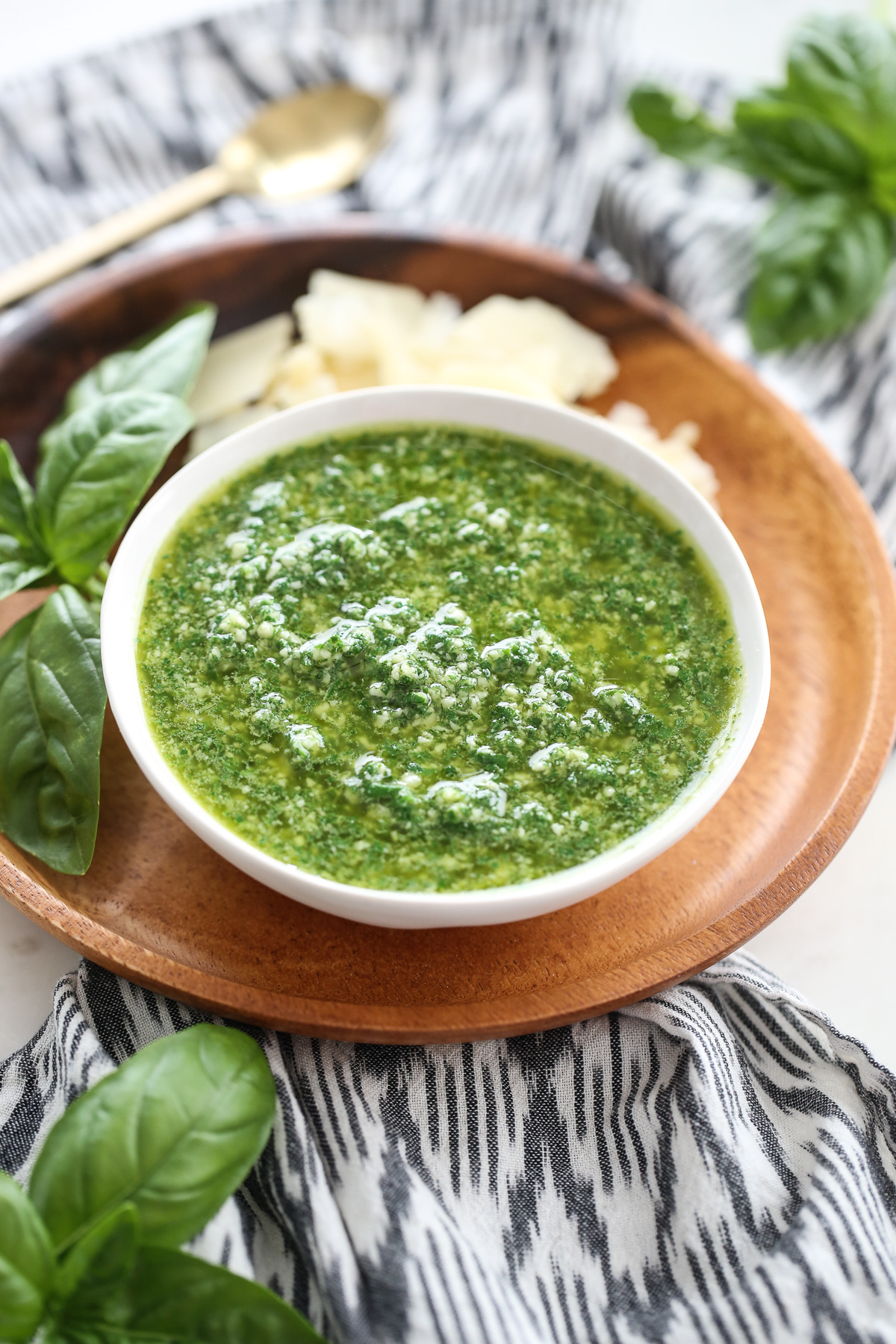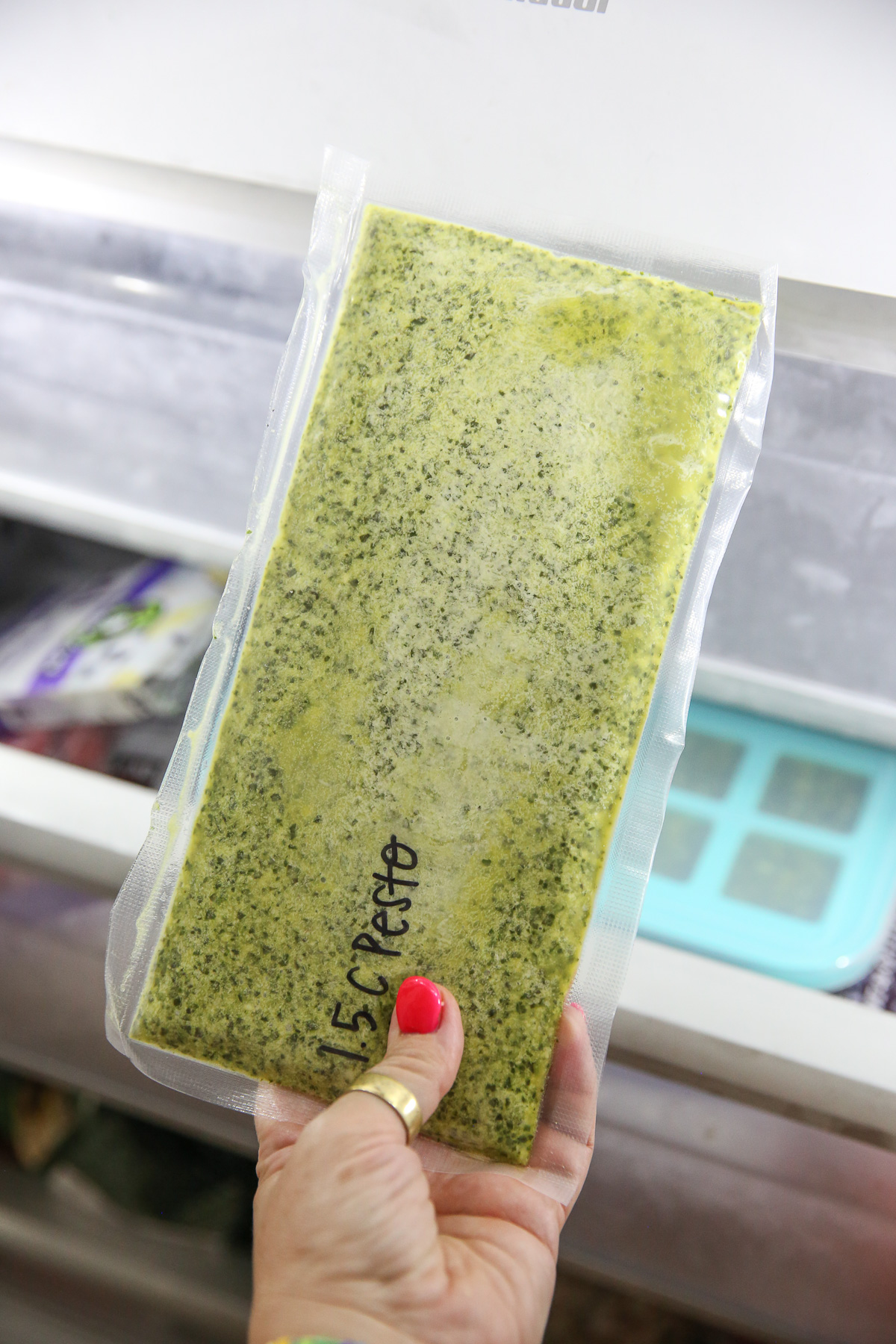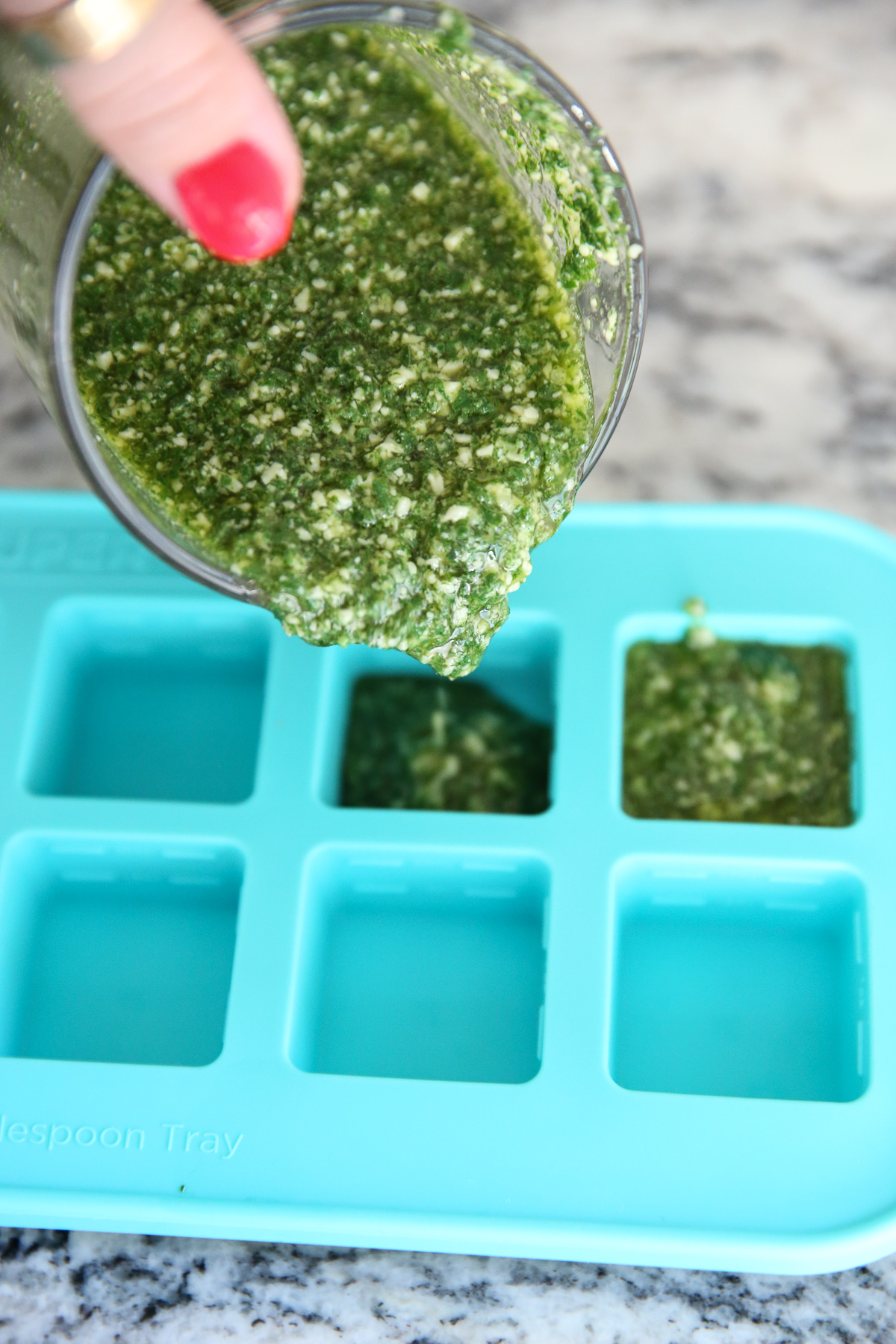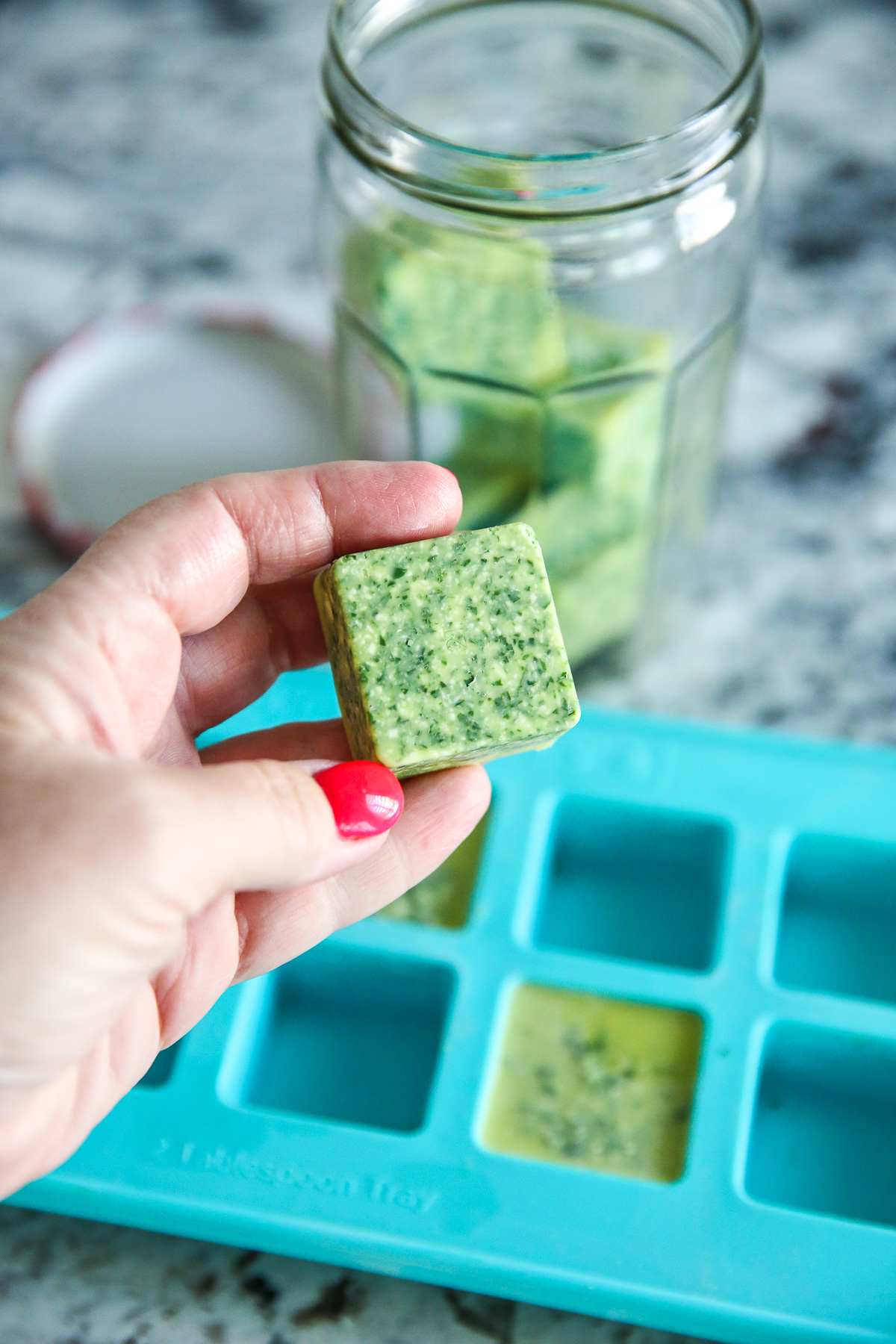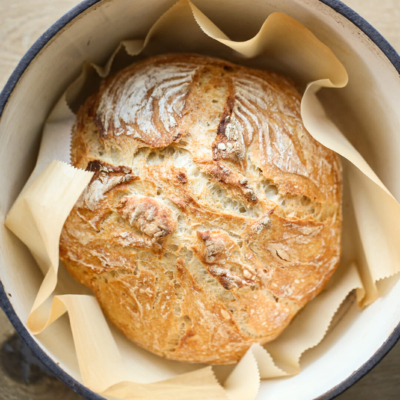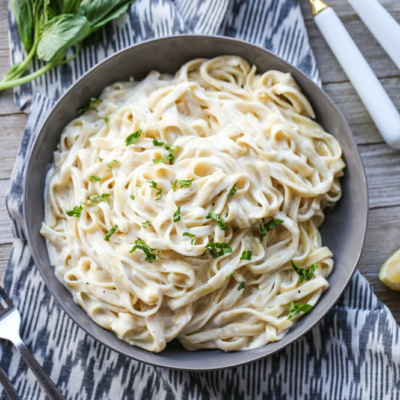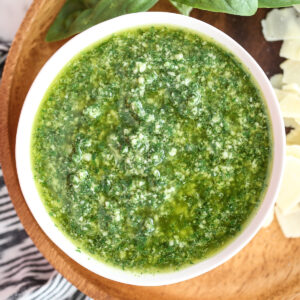Ingredient and Equipment Needed
Basil – fresh basil is non negotiable here. You’ll use only leaves, not the stems. Note that if you’re growing your own basil at home, you want to avoid letting your plants start flowering. If the flowering process is already in full swing, basil has a tendency to start turning bitter at that point, which can affect the flavor of your pesto. Parmesan Cheese – you’ll want to use fresh parmesan cheese, not the crumbly kind in the green bottle. I like to buy a wedge of parmesan and grate myself. Look for the best deal on parm wedges in the standard cheese aisle, as opposed to the specialty cheeses in the deli. Pine Nuts – buttery pine nuts are the classic pesto ingredient, but you are welcome to substitute other nuts. Walnuts and almonds are popular choices. If you have a nut allergy, like we do at my house, you can also leave out the nuts. Garlic – use fresh garlic, garlic powder won’t be as good in this recipe. Olive Oil – I recommend extra virgin olive oil. You could use a “light” olive oil if you’d prefer a lighter olive oil flavor, but extra virgin is what is typically used. The flavor of your oil will come through, so make sure it’s one you enjoy the flavor of. Food Processor – a food processor is the go-to piece of equipment for pesto, but if you don’t have one, you could use a high-powered blender (being very careful to not overblend or blend at too high of a speed) or finely chop by hand. I’m very partial to Cuisinart food processors- this is my favorite!
How to make Fresh Basil Pesto
Serving Suggestions
Pesto is great to have on hand because it’s a great meal-time shortcut that adds a lot of flavor, quickly! Here’s a few ways we love to use it:
Toss with hot pasta Mix it with alfredo sauce Drizzle over roasted vegetables Use on homemade pizza Use as a dip for bread or fresh vegetables Drizzle over roasted or mashed potatoes Stir into soup or tomato based sauces Spread on grilled cheese sandwiches Blended into salad dressings


